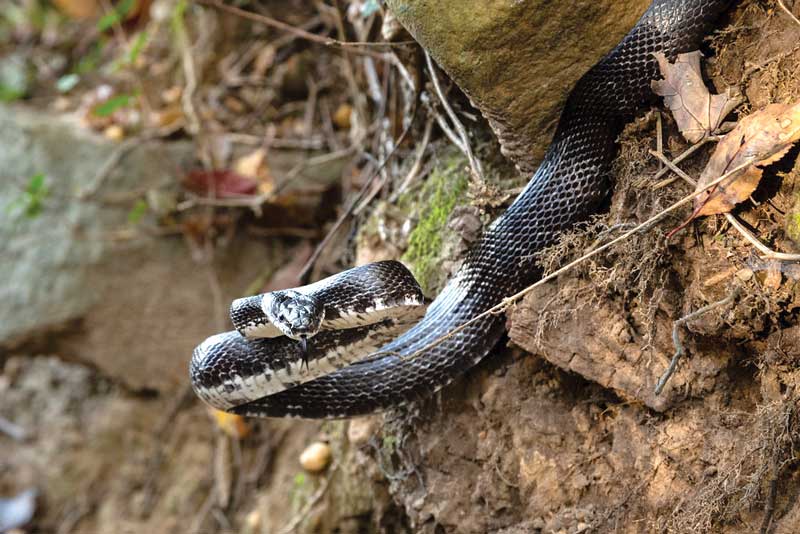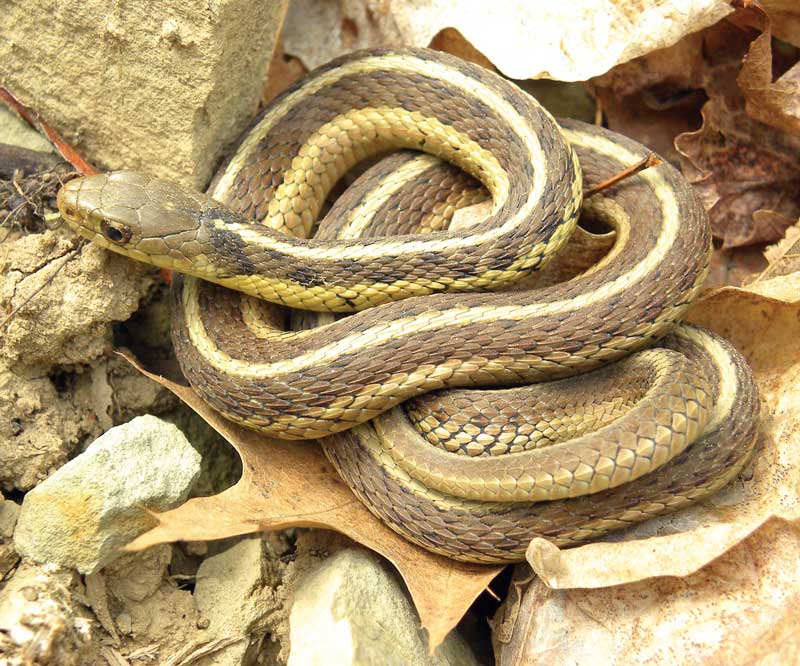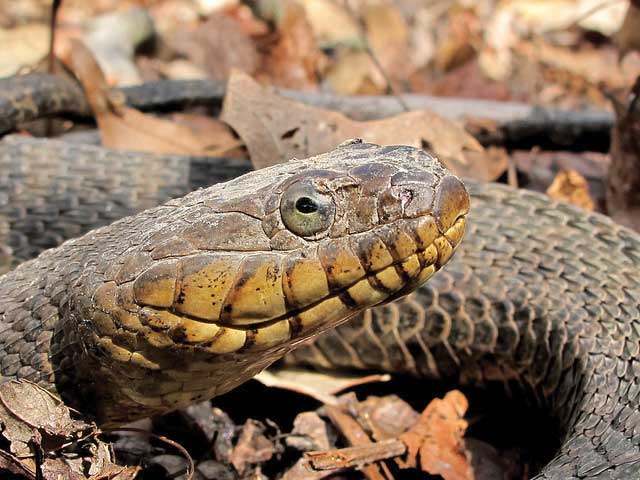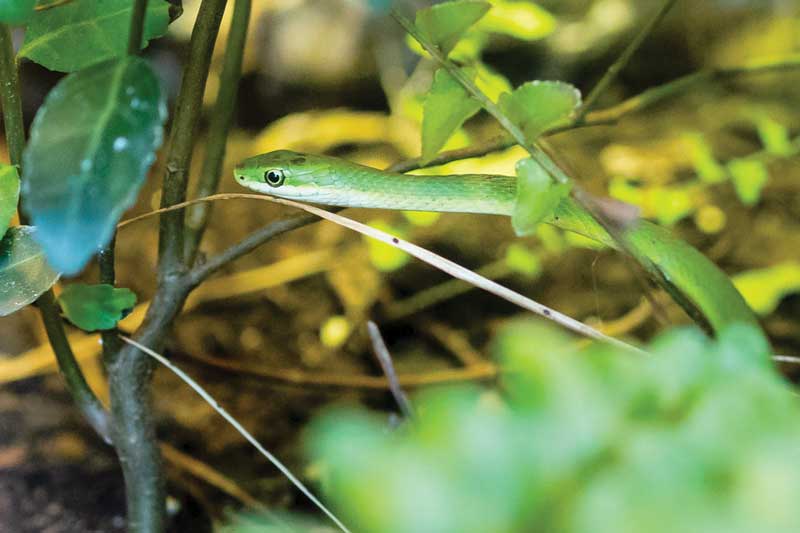Last summer when a friend was bitten by a copperhead near a stream in Virginia, it got us wondering, what are the common snakes we should know about in Chesapeake country? We turned to the Chesapeake Bay Program for answers.
1. Black Rat Snake
Elaphe obsolete obsolete, a non-venomous snake that grows to three and a half to six feet in length and has a black, scaly body; a white belly and chin; and a wedge-shaped head.

These snakes protect themselves from predators by coiling their bodies and vibrating their tails. They are shy, secretive, and usually avoid confrontation, although may strike if threatened. Black rat snakes eat large amounts of rats, mice, and other pests. They are excellent climbers, able to scale brick walls and tree trunks. If threatened, they may release a foul-smelling musk.
2. Copperhead
Agkistrodon contortrix, one of only a few venomous snakes found in the Chesapeake Bay watershed, although it is rarely lethal to humans. This snake has a broad, unmarked, copper-colored head and a reddish-tan colored body with hourglass-shaped darker marks on its back. Its underside is a pinkish color. Its pupils are elliptical. Adult copperheads can reach about three feet in length.

Copperheads are carnivorous, eating mainly mice but also birds, snakes, amphibians, and insects. They will inject venom to subdue their prey, making it easier to swallow whole.
These snakes bite more people each year than any other snake species in the United States. Although venomous, they are typically calm snakes that only bite if stepped on or otherwise threatened. If you see a copperhead, leave it alone!
Copperheads do not try to make a quick getaway when they sense danger—instead, they freeze in their tracks and wait for the danger to pass. Their brown, tan, and rust coloring can make motionless copperheads difficult to spot when lying on leaves or soil. Always look before you step when hiking in areas where copperheads are common.
3. Eastern Garter Snake
Thamnophis sirtalis sirtalis, the state snake of Virginia, a common terrestrial snake that grow to 18 to 26 inches long with keeled (ridged) scales and variation in their coloration and patterns. Their backs are dark brown, green or olive-colored with a distinct yellow or white stripe running down the center. This center stripe is often paralleled by two less distinct white, yellow, brown, green or bluish stripes, although occasionally individuals appear all black with no stripes.

These snakes feed during the day on earthworms, millipedes, spiders, insects, salamanders, small fish, frogs, and toads. If handled or attacked, they will release a foul-smelling musk.
4. Northern Water Snake
Nerodia sipedon sipedon, a non-venomous aquatic snake that lives in lakes, swamps, streams, and other waterways and the most common snake seen in fresh and brackish waters in the Chesapeake region. The snake grows to be two to four feet long, has a highly variable color and pattern, and may be tan, gray, reddish, or brownish-black. Older snakes are darker, often without a clear pattern. Northern water snakes also have round pupils.

These snakes eat small fish, worms, frogs, salamanders, and crayfish and will swallow their prey alive. They escape predators (such as foxes and raccoons) by diving underwater, where they can stay for an hour and a half without coming up for air. When threatened, they can be aggressive and will secrete a foul-smelling odor to keep predators away.
5. Rough Green Snake
Opheodrys aestivus aestivus, a non-venomous snake that lives in leafy trees and shrubs in thickly vegetated areas throughout the Chesapeake Bay region. These snakes grow to 22 to 32 inches in length, with a long, slender, bright green body covered with rough-looking scales and a white, cream or yellow belly.

Rough green snakes feed primarily on insects, such as crickets, caterpillars, and grasshoppers, though they will also eat snails, spiders, and small frogs. They use their excellent vision to find and track down prey. They are the only tree-dwelling snakes in the Bay region, but are also good swimmers! Rough green snakes are docile and do not bite.